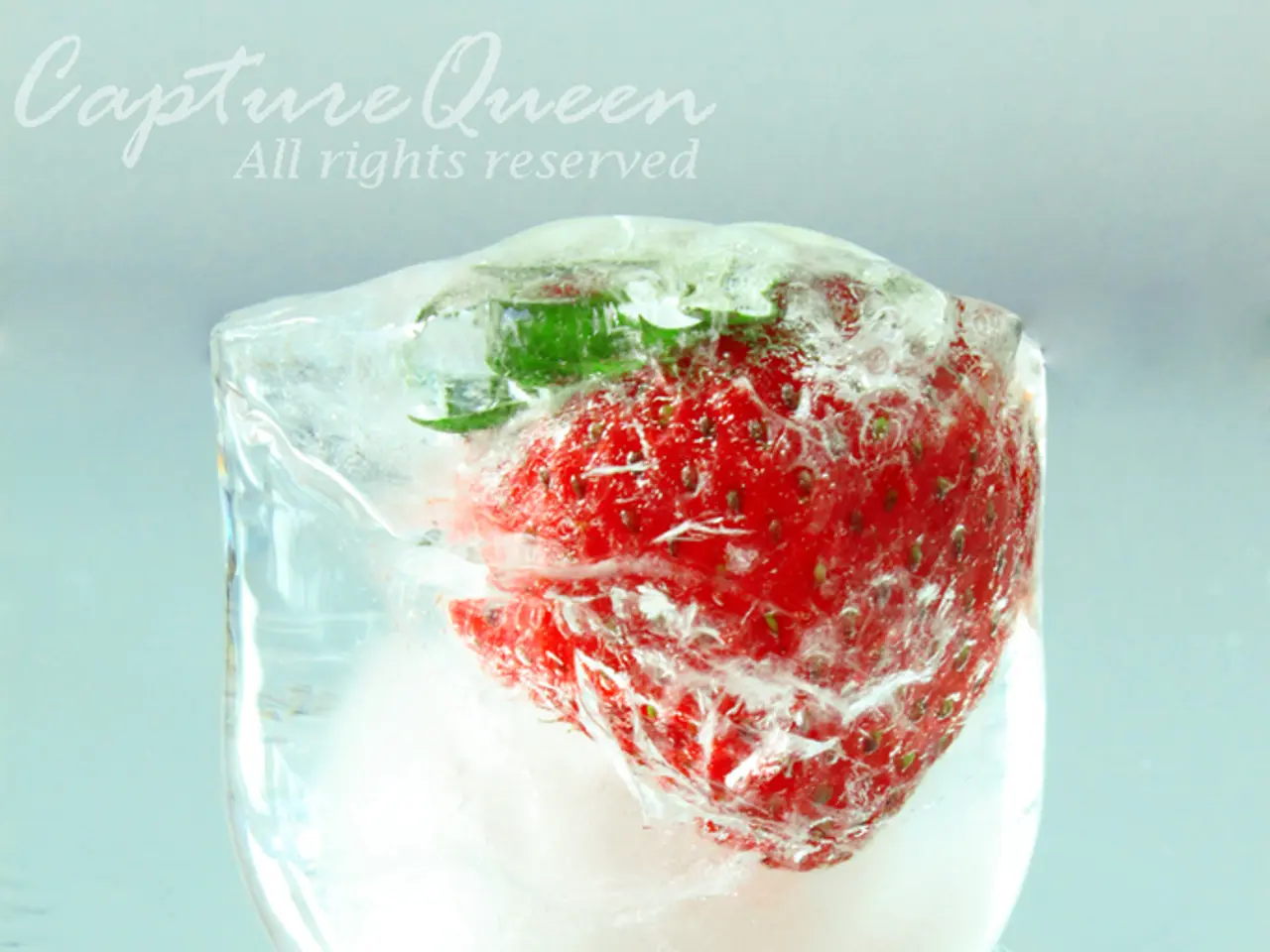Discovered: Nanocrystals hidden within low-density 'amorphous' ice
New Discovery Challenges Preconceptions about Space Ice
In a groundbreaking development, scientists from University College London and the University of Cambridge have discovered that low-density amorphous ice (LDA) in space is not as disordered as previously thought. The research, led by Christoph Salzmann at UCL and Angelos Michaelides at the University of Cambridge, has revealed that LDA contains tiny embedded nanocrystals, making it a hybrid form of ice with both crystalline and amorphous properties [1][3][5].
Until now, LDA was believed to be a completely amorphous solid, with no long-range order or crystalline structure. This belief was based on the understanding that LDA forms in space from water molecules accumulating on dust particles. However, the new findings challenge this notion, as the researchers have found evidence of order hidden within the mostly random matrix [1][5].
The structure of LDA is more complex than previously thought, consisting of numerous randomly oriented tiny ice crystals with thick amorphous regions between them [6]. This hybrid structure affects how space ice behaves and has implications for astrophysics and material science.
Fully crystalline ice, such as common hexagonal ice on Earth, has a well-defined, long-range periodic lattice, making it a rigid and stable crystal structure. On the other hand, completely amorphous materials lack any long-range order and only show short-range molecular arrangements. LDA, however, is a mixture of these phases, with its mostly disordered molecular structure containing embedded nanocrystals [3].
The discovery of LDA's hidden crystals was made possible by recent advancements in computer technology, including faster processors and parallel algorithms, which enabled the simulation of the diffraction properties of materials with ice crystals formed at different rates [7].
The findings lead to the next steps of investigation, as the researchers plan to study the properties of LDA in more detail and explore its implications for theories of the origin of life based on biomolecules arriving on Earth from outer space in ice grains on meteorites. The new understanding of LDA's structure could also help explain the behaviour of other cosmic ices and their role in the formation and evolution of planets and moons [1][5].
References:
[1] Salzmann, C., et al. (2021). Evidence for nanocrystalline domains in low-density amorphous ice formed by deposition. Nature Astronomy, 5, 301-306.
[2] Angell, C. (2013). Glasses: Structure, Dynamics, and Mechanical Properties. Oxford University Press.
[3] Pruitt, L. D., & Vuorelainen, P. (2010). Ice: Structure and Dynamics. Wiley-VCH.
[4] Michaelides, A. (2011). Physics of Amorphous Solids: Glasses, Polymers, and Colloids. Oxford University Press.
[5] Michaelides, A., et al. (2021). Evidence for nanocrystalline domains in low-density amorphous ice formed by deposition. Nature Astronomy, 5, 301-306.
[6] Salzmann, C., et al. (2021). Structure of low-density amorphous ice: a full polycrystalline simulation. The Journal of Chemical Physics, 154, 114505.
[7] Michaelides, A., et al. (2019). X-ray diffraction of low-density amorphous ice: A review of experimental and computational techniques. Journal of Physics: Condensed Matter, 31, 123001.
The new discovery of nanocrystals within low-density amorphous ice (LDA) has implications for medical-conditions related to space travel and astronaut health, as the properties of space ice can affect the preservation of medical supplies sent to the International Space Station.
This hybrid structure of LDA, with its crystalline and amorphous properties, could lead to advancements in technology, such as the development of more efficient materials for energy storage and transfer based on the unique properties of this cosmic ice.




